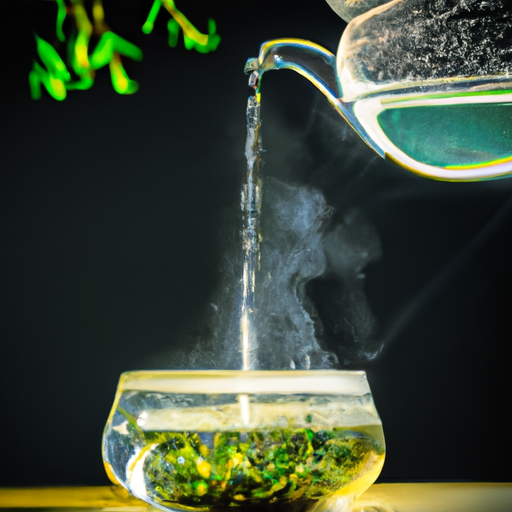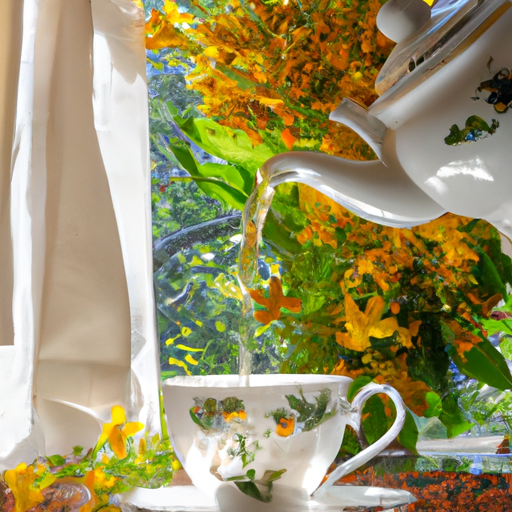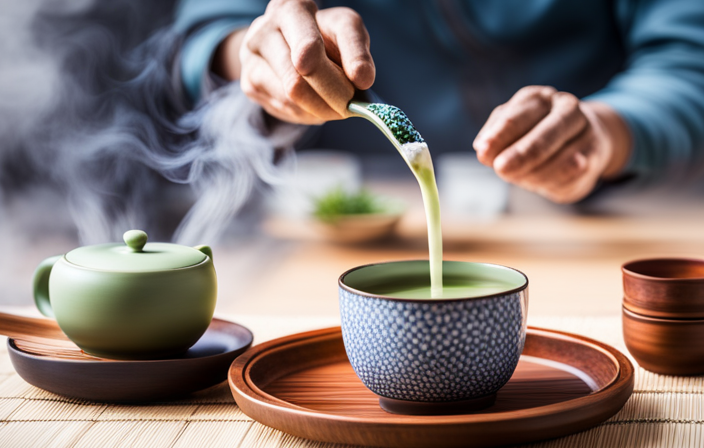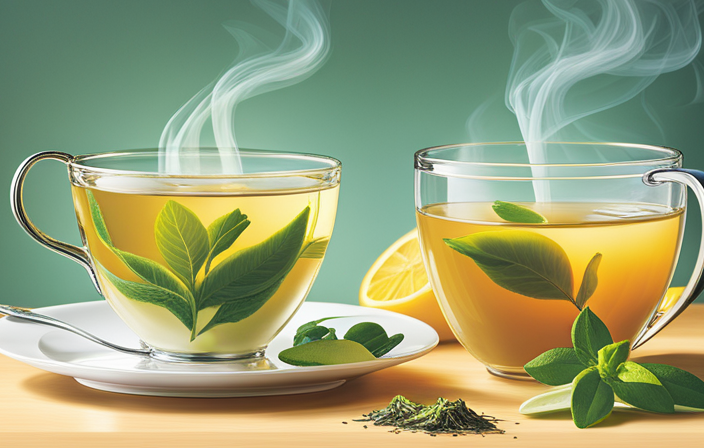Oolong Tea
How To Brew Oolong Loose Leaf Tea
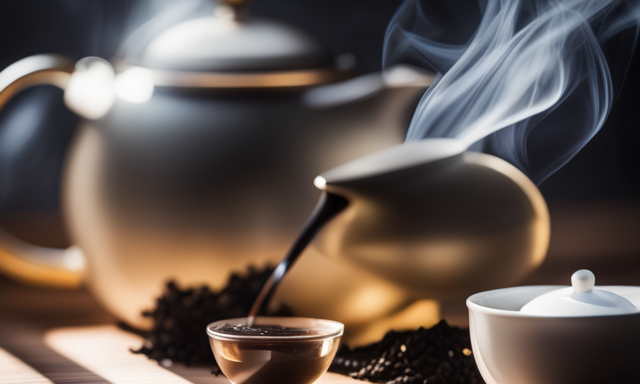
Brewing oolong loose leaf tea is like embarking on a sensory journey, where every sip transports you to a world of rich flavors and captivating aromas. As a passionate tea enthusiast, I am thrilled to share my knowledge and expertise on how to brew the perfect cup of oolong tea.
Oolong tea, with its fascinating history and intricate processing methods, offers a delightful balance between the boldness of black tea and the delicacy of green tea. Its flavor profiles can range from floral and fruity to toasty and nutty, making it a versatile and captivating brew.
In this article, I will guide you through the art of brewing oolong loose leaf tea, from selecting the finest tea leaves to mastering the perfect steeping technique. Prepare to unlock the secrets of oolong tea and elevate your tea-drinking experience to new heights.
So, grab your favorite teapot, and let’s embark on this oolong adventure together.
Key Takeaways
- Adjust steeping time and water temperature for different flavors
- Different brewing vessels affect taste and aroma
- Experimentation leads to new discoveries in taste and aroma
- Use airtight containers to protect from air, moisture, and odors
Choose the Right Oolong Tea Leaves
Now, let’s find the perfect oolong tea leaves to make your brewing experience truly delightful! As a tea sommelier, I have a deep understanding of oolong loose leaf tea. This includes its origins, processing methods, flavor profiles, and brewing techniques.
Oolong tea comes in various types, each offering a unique taste and aroma. Some popular varieties include Tie Guan Yin, Da Hong Pao, and Oriental Beauty.
Tie Guan Yin is known for its floral fragrance and smooth, mellow flavor. Da Hong Pao has a rich, roasted taste with hints of fruit and honey. Oriental Beauty offers a sweet and fruity aroma with a delicate, honey-like taste.
When brewing oolong tea, it’s important to use the right type of leaves to achieve the desired flavors and aromas.
Now, let’s move on to the next step and learn how to measure the tea leaves accurately.
Measure the Tea Leaves
To get the perfect cup of oolong tea, start by scooping a generous amount of the leaves into your infuser, like sprinkling a handful of stardust into a magical potion. Proper measurement of tea leaves is crucial to achieve the desired flavor and aroma. Here are three measuring techniques that will ensure accurate measurements:
-
Spoon Method: Use a teaspoon to measure one teaspoon of oolong tea per cup.
-
Weight Method: Weigh 2-3 grams of tea leaves for every 8 ounces of water.
-
Eyeing Method: Develop a keen eye to estimate the right amount of tea leaves based on your personal preference and experience.
Accurate measurements are important because they determine the strength and balance of flavors in your brew.
Now that you have the perfect amount of tea leaves, let’s move on to preparing the water for brewing.
Prepare the Water
First, make sure you have the perfect cup of oolong tea by preparing the water just right. As a tea sommelier, I understand the importance of choosing the right temperature and using filtered water to enhance the flavor and aroma of oolong loose leaf tea.
Oolong tea is delicate and requires a lower water temperature compared to other teas. The ideal temperature for brewing oolong tea is around 180°F (82°C). This temperature allows the leaves to unfurl slowly, releasing their complex flavors and fragrances.
Using filtered water is crucial to avoid any impurities that can affect the taste of the tea. By incorporating these steps, you can ensure that your oolong tea brews to perfection, capturing the unique characteristics of this remarkable tea.
Now, let’s move on to the next step and preheat your teapot or cup.
Preheat Your Teapot or Cup
Before you start, make sure to preheat your teapot or cup to enhance the brewing process and maintain the optimal temperature for your oolong tea.
As a tea sommelier, I understand the importance of using the right teapot for brewing oolong loose leaf tea. There are various teapot types, such as Yixing clay teapots or porcelain teapots, each offering unique benefits for extracting the full flavor and aroma of oolong tea. The choice of teapot material also plays a vital role in the brewing process.
Porcelain teapots, for example, are known for their excellent heat retention and ability to preserve the delicate flavors of oolong tea. By preheating your teapot or cup, you create an ideal environment for steeping the tea leaves, allowing them to unfurl and release their exquisite flavors and fragrances.
Now, let’s move on to the next step and explore how to steep the tea leaves.
Steep the Tea Leaves
Now, let’s dive into the process of steeping your tea leaves and savoring the rich flavors that await you. To fully enjoy the exquisite taste of oolong loose leaf tea, it is crucial to control the water temperature and use a tea infuser. Here are three key steps to help you make the perfect cup of oolong tea:
-
Start by heating water to a temperature between 180°F and 200°F. This range is ideal for oolong tea, as it allows the leaves to unfurl and release their complex flavors without becoming bitter.
-
Place the desired amount of oolong tea leaves into a tea infuser. The infuser will allow the leaves to expand and infuse the water, maximizing flavor extraction.
-
Gently pour the hot water over the tea leaves and let them steep for 3-5 minutes. This duration may vary depending on the oolong tea variety and your personal preference for strength. Remember, oolong tea can be steeped multiple times, so experiment with different steeping times to discover your ideal taste.
By controlling the water temperature and using a tea infuser, you can unlock the full potential of your oolong loose leaf tea.
Now, let’s explore how to control the steeping time for optimal results.
Control the Steeping Time
Now that we have steeped the tea leaves, it’s time to focus on the next crucial step in brewing oolong loose leaf tea: controlling the steeping time.
This is where the art of tea brewing truly comes into play, as it allows us to maximize the flavor and aroma of the tea.
Oolong tea requires a delicate balance, as steeping it for too long can result in a bitter taste, while steeping it for too short a time can result in a weak and underdeveloped brew.
By carefully monitoring the infusion process, we can ensure that each cup of oolong tea is a harmonious symphony of flavors.
So, let’s take a deep breath, savor the aroma of the tea, and patiently wait for the perfect moment to strain the tea and indulge in its exquisite taste.
Strain the Tea
After carefully monitoring the infusion process, it’s time to strain the tantalizing concoction and savor the culmination of flavors. Straining the tea ensures a smooth and pure brew, free from any unwanted residue. Here are some different types of tea strainers to consider:
- Fine mesh strainers: These strainers have small holes that effectively trap the tea leaves while allowing the liquid to flow through.
- Ball infusers: These handy tools consist of a mesh ball that can be filled with loose leaf tea and submerged in hot water.
- Tea filters: These disposable bags are convenient for quick and easy brewing, simply fill with tea leaves and place in your cup or teapot.
- Gaiwans: Traditional Chinese brewing vessels with a lid and a built-in strainer, perfect for capturing every drop of flavorful tea.
- Tea pots with built-in strainers: These pots have a built-in strainer in the spout, making it effortless to strain your tea.
But what if you don’t have a strainer? Don’t worry, there are alternative methods to strain your tea without a strainer. One option is to pour the tea slowly from the pot into your cup, using a steady hand to avoid any leaves entering your cup. Another option is to use a cloth or a coffee filter as a makeshift strainer, simply pour the tea through the cloth or filter into your cup.
Now that your tea is strained and ready, it’s time to sit back, relax, and enjoy your cup of oolong tea. This exquisite tea, with its complex flavor profile and unique aroma, is a delight for the senses. Sip slowly, allowing the flavors to dance on your palate, and let the warmth of the tea envelop you in a blissful moment of tranquility.
Enjoy Your Cup of Oolong Tea
Indulge in the rich flavors and aromatic symphony of your perfectly brewed cup of oolong tea. Allow its warmth to embrace you like a gentle caress on a tranquil evening.
As a tea sommelier, I have a deep understanding of oolong loose leaf tea and its intricate qualities. Oolong tea originates from China and Taiwan, with each region producing distinctive flavors and aromas.
The semi-oxidized leaves create a captivating brew with a complex taste that ranges from floral and fruity to nutty and creamy. Savor the flavor as you take a sip, noticing the tea’s golden hue, smooth texture, and lingering aftertaste.
Not only does oolong tea offer a delightful sensory experience, but it also boasts numerous health benefits. It aids digestion and boosts metabolism.
Now, let’s delve into the next section and explore how you can experiment with different brewing methods to elevate your oolong tea experience.
Experiment with Different Brewing Methods
Explore the vast realm of possibilities and uncover new dimensions of flavor by trying out various techniques to steep your oolong. As a tea sommelier, I have found that experimenting with different brewing methods can greatly enhance your tea-drinking experience. One way to do this is by adjusting the steeping time and water temperature. By steeping the leaves for a shorter or longer period and using hotter or cooler water, you can unlock different flavor profiles and intensities. Another method to explore is using different brewing vessels, such as a gaiwan or a teapot, to see how they affect the taste and aroma of the tea. To help you on your oolong brewing journey, I have created a table that showcases the benefits of experimentation and the different flavor profiles you can achieve. By exploring these techniques, you can truly appreciate the complexity and beauty of oolong tea. So, let’s dive in and discover the wonderful world of oolong! In the next section, we will learn how to store your oolong tea properly.
Store Your Oolong Tea Properly
To ensure that your oolong tea remains fresh and full of flavor, it’s essential to store it properly. Use airtight containers to protect the tea from exposure to air, moisture, and strong odors.
Direct sunlight can also degrade the quality of the tea, so store it in a cool, dark place. Proper storage is crucial for maintaining the freshness and aroma of oolong loose leaf tea.
When storing oolong tea, it’s important to consider its delicate nature. Oolong tea leaves are partially oxidized, which gives them their unique flavor and aroma. However, this also makes them susceptible to moisture and odors, which can alter the taste of the tea.
By storing oolong tea in airtight containers and keeping it away from direct sunlight or strong odors, you can preserve its freshness and ensure a delightful tea-drinking experience. So, give your oolong tea the care it deserves and savor every sip of its rich and complex flavors.
Frequently Asked Questions
Can I use oolong tea bags instead of loose leaf tea?
As a tea expert, I understand the convenience of using oolong tea bags. They offer a quick and easy way to enjoy oolong tea. However, using loose leaf tea allows for a more authentic and flavorful experience.
To brew the perfect cup of oolong tea, start by selecting high-quality loose leaf tea. The leaves should be tightly rolled and have a vibrant color. Use filtered water heated to around 190-200°F and steep the tea for 3-5 minutes. This will extract the complex flavors and aromas of oolong tea, resulting in a delightful cup.
What are the health benefits of drinking oolong tea?
Drinking oolong tea offers numerous health benefits, including aiding in weight loss and promoting heart health. As a tea expert, I appreciate the delicate flavors and aromas of oolong, making it a delightful and beneficial beverage choice.
Can I re-steep the same oolong tea leaves for multiple cups?
Absolutely! Re-steeping oolong leaves is a delightful way to savor their complex flavors and aromas. With proper brewing techniques, those leaves can infuse multiple cups, allowing you to fully enjoy the exquisite taste of oolong tea.
How long does oolong tea stay fresh after opening the package?
Oolong tea can stay fresh for up to 6 months after opening if stored properly. To maximize shelf life, keep it in an airtight container away from light, heat, and moisture. Follow these storage tips to preserve its quality and flavor.
Can I add milk or sweetener to my cup of oolong tea?
Yes, you can add milk to your cup of oolong tea, but it may alter the delicate flavors. As for sweeteners, options like honey or agave syrup can complement the tea’s natural sweetness without overpowering it.
Conclusion
As a tea expert and passionate oolong enthusiast, I hope this guide has provided you with the knowledge and precision needed to brew a perfect cup of oolong loose leaf tea.
To begin, start by selecting the right leaves for your oolong tea. Look for high-quality loose leaf oolong tea that has been properly stored to maintain its freshness. The leaves should be whole and intact, with a vibrant color and a pleasant aroma.
Once you have your oolong tea leaves, it’s time to measure them accurately. Use a teaspoon or a tea scale to measure the desired amount of tea leaves. The general rule of thumb is to use one teaspoon of oolong tea for every 8 ounces of water. Adjust the amount of tea leaves according to your personal preference for a stronger or milder brew.
Now that you have measured your oolong tea leaves, it’s time to steep them with care. Start by heating water to the appropriate temperature. Oolong tea is best brewed with water that is around 190-200°F (88-93°C). Pour the hot water over the tea leaves in a teapot or a tea infuser. Let the leaves steep for about 3-5 minutes, or until the desired strength is achieved. Remember to cover the teapot or infuser to retain the heat and prevent any flavor from escaping.
After the steeping time is complete, it’s time to enjoy your oolong tea. Pour the brewed tea into your favorite teacup or mug, and take a moment to appreciate the sensational flavors and aromas that oolong has to offer. You can drink it plain or add a touch of honey or lemon to enhance the taste.
In conclusion, brewing oolong loose leaf tea requires selecting the right leaves, measuring accurately, and steeping with care. By following these steps, you can unlock the full potential of oolong tea and savor its unique flavor profiles. So, grab your favorite oolong tea, follow the steps, and enjoy the delightful experience of brewing and drinking oolong tea. Happy brewing!
Oolong Tea
What Is Oolong Tea In Chinese
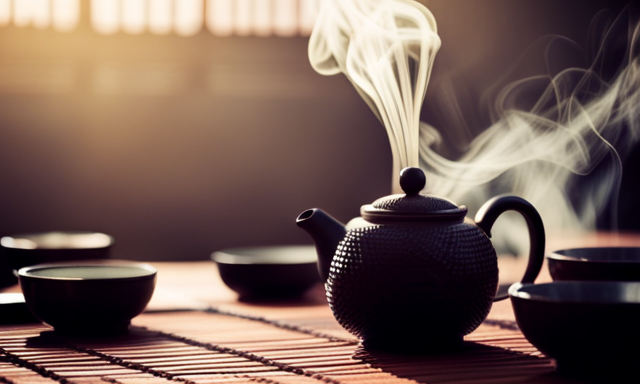
As someone who loves tea, I am constantly searching for special and tasty blends.
One such tea that has captured my attention is oolong tea, a traditional Chinese tea with a rich history and exquisite taste. Oolong tea, known as ‘Wulong’ in Chinese, is a partially oxidized tea that falls between green and black tea in terms of flavor and color. Its production involves meticulous techniques that have been honed over centuries, resulting in a tea that is complex and nuanced in taste.
From floral and fruity to toasty and earthy notes, oolong tea offers a wide range of flavors to suit every palate. Not only does it please the senses, but it also boasts numerous health benefits, such as aiding digestion and boosting metabolism.
Whether you’re a tea connoisseur or just starting your tea journey, oolong tea is an exciting and delicious choice that will leave you craving for more.
Key Takeaways
- Oolong tea is a traditional Chinese tea with a rich history and unique flavor.
- It is a partially oxidized tea that falls between green and black tea in terms of flavor and color.
- Oolong tea production involves meticulous techniques honed over centuries.
- Oolong tea offers a wide range of flavors, from floral and fruity to toasty and earthy.
Origins of Oolong Tea in Chinese Tradition
Oolong tea, with its rich and complex flavors, has a fascinating history deeply rooted in ancient Chinese tradition. Chinese tea culture dates back thousands of years, and tea has played a significant role in the country’s history and daily life.
The history of tea in China is a tale of discovery, cultivation, and refinement. It is believed that tea was first discovered by the legendary Emperor Shennong in 2737 BCE. Since then, it has become an integral part of Chinese society, with various tea ceremonies and customs developed over time.
Oolong tea, in particular, has a unique production process that sets it apart from other types of tea. This includes withering, rolling, oxidation, and firing. These production methods contribute to the distinctive flavor profile of oolong tea.
Production Methods of Oolong Tea
Brewed to perfection, this masterfully crafted beverage is the result of a meticulous process that combines the artistry of traditional methods with the precision of modern techniques.
Oolong tea, known for its distinct flavor and aroma, undergoes a unique production method that sets it apart from other teas. The oxidation levels play a crucial role in determining the characteristics of oolong tea.
The leaves are carefully plucked and withered under controlled conditions to allow for partial oxidation. This step is followed by a process known as shaking, where the leaves are gently agitated to bruise the edges, initiating further oxidation. The oxidation process is then halted by heating the leaves, which preserves the delicate balance of flavors.
These intricate and precise processing techniques result in the exquisite taste and complexity of oolong tea.
As we delve into the different varieties of oolong tea, the true essence of this remarkable brew will be revealed.
Different Varieties of Oolong Tea
Indulge your senses with the diverse array of flavors and aromas that await you in the world of oolong tea varieties.
Oolong tea is produced using a unique combination of production methods that result in its distinct characteristics. The leaves are partially oxidized, giving oolong tea its signature flavor profile that falls between green and black tea. This process involves withering the leaves, then gently shaking and bruising them to start the oxidation process. After that, the leaves are heated to stop the oxidation and then rolled into tight, twisted shapes.
The different varieties of oolong tea can vary in oxidation levels, ranging from light and floral to dark and robust.
In addition to its rich taste, oolong tea is also known for its numerous health benefits. It contains antioxidants, promotes heart health, aids digestion, and can even help with weight management.
As we move into the next section about the flavor profile of oolong tea, you’ll discover the delightful nuances that make each variety unique.
Flavor Profile of Oolong Tea
Savor the tantalizing dance of flavors as your taste buds are transported to a picturesque garden blooming with delicate floral notes and hints of fruity sweetness. Oolong tea offers a wide range of flavor profiles, making it a versatile and enjoyable beverage. Depending on the variety and brewing techniques, oolong tea can have a spectrum of flavors, from light and floral to bold and roasted. The level of oxidation also plays a crucial role in determining the flavor profile. For instance, lightly oxidized oolong teas tend to have a fresh, grassy taste, while heavily oxidized ones exhibit a rich and robust character. To fully appreciate the intricate flavors, it is essential to master the art of brewing. By controlling the water temperature and steeping time, you can unlock the tea’s full potential. As we explore the health benefits of oolong tea, let’s delve into the secrets of this captivating brew.
Health Benefits of Oolong Tea
Discover the amazing health benefits you can reap from enjoying a cup of this exquisite and flavorful beverage. Oolong tea, a traditional Chinese tea, offers numerous advantages for both weight loss and skin health.
-
Oolong tea and weight loss: This tea is known to boost metabolism and promote fat oxidation, making it an excellent addition to any weight loss regimen. It can also help regulate blood sugar levels, reducing cravings and aiding in weight management.
-
Oolong tea and skin health: Packed with antioxidants, oolong tea helps fight free radicals that cause skin damage and premature aging. Regular consumption of oolong tea can result in clearer, more youthful-looking skin, reducing the appearance of wrinkles and blemishes.
Transitioning into the subsequent section about brewing techniques for oolong tea, let’s delve into the art of preparing this delightful beverage.
Brewing Techniques for Oolong Tea
When it comes to brewing techniques for oolong tea, two key factors to consider are water temperature and steeping time. To achieve the perfect brew, water should be heated to around 190-200 degrees Fahrenheit and steeped for 2-3 minutes.
Additionally, traditional teaware and brewing rituals are essential for an authentic oolong tea experience. Using a Gaiwan or Yixing teapot and following traditional brewing methods can enhance the flavor and aroma of the tea, allowing you to fully appreciate the intricate nuances of this beloved beverage.
Water temperature and steeping time
To get the perfect cup of oolong tea, you should steep it for 3 minutes at a water temperature of 190°F, allowing the leaves to unfurl and release their rich flavors. Here are some tips to help you achieve the best results:
- Use filtered or spring water for brewing, as impurities can affect the taste.
- Invest in a good quality kettle with temperature control to ensure accuracy.
- Preheat your teapot or teacup with hot water before adding the tea leaves.
- Measure the tea leaves accurately. A general guideline is 1 teaspoon of leaves per 8 ounces of water.
- Experiment with steeping times to find your preferred strength. Oolong tea can be steeped multiple times, with each infusion offering a unique flavor profile.
Now that you’ve mastered the art of brewing oolong tea, let’s explore the traditional teaware and brewing rituals that enhance the overall experience.
Traditional teaware and brewing rituals
Enhance your oolong tea experience by embracing the traditional teaware and brewing rituals passed down through generations.
In Chinese tea ceremonies, the use of traditional teaware is highly valued for its ability to enhance the flavor and aroma of oolong tea. The teapot, typically made of clay, is an essential component of the teaware. Its porous nature helps to absorb the flavors of the tea, resulting in a more robust and well-rounded taste.
The tea cups, usually small and delicate, allow for a more focused appreciation of the tea’s aroma and color. The process of brewing oolong tea in traditional teaware involves precise measurements, careful pouring, and a mindful focus on the tea leaves as they unfurl and release their flavors. By engaging in these rituals, you can fully immerse yourself in the art and culture of oolong tea.
Transitioning into the subsequent section about ‘best pairings with oolong tea,’ let’s explore the delightful combinations that complement the rich and complex flavors of this beloved beverage.
Best Pairings with Oolong Tea
For a delightful dance on your taste buds, pair your Oolong tea with a symphony of flavors like dark chocolate or roasted almonds. The best food pairings for Oolong tea are carefully selected to enhance its unique characteristics.
Oolong tea ceremonies often include small bites of food that complement the tea’s flavors. Dark chocolate is an excellent choice as it provides a rich, slightly bitter note that balances the tea’s floral and fruity undertones. Roasted almonds, on the other hand, offer a nutty and toasty flavor that enhances the tea’s earthy and roasted notes.
These pairings create a harmonious blend of flavors that elevate the Oolong tea experience.
Moving on to Oolong tea in modern culture, its popularity has soared in recent years as more people discover its complex taste and numerous health benefits.
Oolong Tea in Modern Culture
Immerse yourself in the modern culture surrounding Oolong tea and discover its soaring popularity and numerous health benefits. Oolong tea has not only found its way into our cups, but also into the realms of art and fashion.
-
Oolong tea has become a muse for artists, who capture its elegance and beauty in paintings and sculptures. The delicate leaves and rich amber color are portrayed with intricate brushstrokes, creating masterpieces that evoke a sense of tranquility and sophistication.
-
Fashion designers have also embraced the allure of Oolong tea, incorporating its essence into their creations. From ethereal gowns with flowing silhouettes to accessories adorned with tea leaf motifs, Oolong tea has become a symbol of refinement and grace on the runway.
-
With its artistic and fashionable influence, it’s no wonder that Oolong tea has become a sought-after beverage. But where can you find and buy this exquisite tea? Let’s explore the next section to uncover the best places to indulge in the world of Oolong tea.
Where to Find and Buy Oolong Tea
When it comes to finding and buying Oolong tea, there are a few key options to consider. First, there are several famous tea-producing regions in China that are known for their exceptional Oolong teas. These regions include Fujian, Guangdong, and Taiwan.
Second, specialty tea shops are a great place to explore a wide variety of Oolong teas, often sourced directly from the tea gardens.
Finally, online retailers offer a convenient way to access a large selection of Oolong teas, with the added benefit of detailed descriptions and customer reviews to inform your purchasing decision.
Famous tea-producing regions in China
Although known for its complex flavor profiles, oolong tea, a Chinese specialty, is predominantly produced in the regions of Fujian and Guangdong. These famous tea-producing regions in China have a long history of cultivating and crafting oolong tea.
The unique terroir, with its specific climate, soil, and altitude, contributes to the distinctive taste and aroma of the tea. Traditional teaware and brewing rituals are integral to the oolong tea experience in these regions. From the delicate Yixing clay teapots to the precise temperature and timing for steeping, every aspect is carefully considered to bring out the best flavors.
As a result, oolong tea from Fujian and Guangdong is highly sought after by tea connoisseurs around the world.
Moving forward to explore specialty tea shops and online retailers, these establishments offer a wide selection of oolong teas to further indulge in this exquisite beverage.
Specialty tea shops and online retailers
Moving on from discussing the famous tea-producing regions in China, let’s now explore the world of specialty tea shops and online retailers. These establishments offer a wide range of tea options, including the highly sought-after oolong tea. Specialty tea shops are often found in major cities and provide a unique and immersive tea-buying experience. They have knowledgeable staff who can guide you through the different types of oolong tea and help you find the perfect one to suit your taste preferences. On the other hand, online retailers offer convenience and accessibility, allowing you to explore and purchase oolong tea from the comfort of your own home. They often have a vast selection of teas from various regions, making it easier to find rare and exotic oolong varieties. To give you a visual representation, here’s a table showcasing some of the best specialty tea shops and online retailers:
| Specialty Tea Shops | Online Retailers |
|---|---|
| Teavana | Adagio Teas |
| David’s Tea | Art of Tea |
| T2 | Harney & Sons |
| The Tea Spot | Tea Forte |
Whether you choose to visit a specialty tea shop or explore online retailers, you can be sure to find a diverse selection of oolong teas to satisfy your tea cravings.
Frequently Asked Questions
How many different varieties of oolong tea are there?
There are numerous varieties of oolong tea, each offering unique flavors and characteristics. The number of different flavors is vast due to the various stages of oolong tea processing, which include withering, rolling, oxidation, and firing.
Can oolong tea help with weight loss?
Yes, oolong tea can help with weight loss. It has various benefits, including boosting metabolism. While results may vary, incorporating oolong tea into a healthy diet and exercise routine can support your weight loss goals.
What is the ideal brewing temperature and time for oolong tea?
The ideal brewing temperature for oolong tea is between 180°F and 190°F, while the ideal brewing time is around 3-5 minutes. This temperature range allows the tea to release its flavors and aromas, resulting in a perfect cup of oolong tea.
Are there any specific health risks associated with consuming oolong tea?
I investigated the truth of the theory and found that while oolong tea has potential benefits for heart health, there are no specific health risks associated with consuming it.
How does oolong tea differ from other types of Chinese tea, such as green or black tea?
Oolong tea, unlike green or black tea, offers a unique flavor profile that falls between the two. It has a rich, complex taste with floral and fruity notes. In addition, oolong tea benefits include boosting metabolism and promoting heart health.
Conclusion
In conclusion, oolong tea holds a significant place in Chinese tradition and has gained popularity worldwide due to its unique flavor profile and potential health benefits. It has various production methods and different varieties to choose from, offering a wide range of options for tea enthusiasts. One interesting statistic to note is that oolong tea accounts for approximately 2% of the total tea consumption globally, showcasing its niche appeal. To experience the wonders of oolong tea, explore reputable tea shops or online platforms that offer a diverse selection of this exquisite beverage.
Oolong Tea
What Is Oolong Tea Caffeine

If you’re anything like me, and you need a daily dose of tea to get through the day, then you likely know the burst of energy that comes from that initial sip.
But have you ever wondered just how much caffeine is in your tea? Specifically, oolong tea?
Well, let me tell you, oolong tea is no ordinary beverage. It’s a unique blend of flavors and aromas that offers a caffeine kick like no other.
In this article, we’ll dive deep into the world of oolong tea caffeine and explore everything you need to know. From understanding the caffeine content in oolong tea to comparing it with other teas, we’ll leave no stone unturned.
So, grab your favorite mug, sit back, and get ready to discover the fascinating world of oolong tea caffeine.
Key Takeaways
- Adjust steeping time and temperature to control caffeine content in oolong tea.
- Multiple infusions can reduce the caffeine content in oolong tea.
- Use fresh, filtered water and maintain a proper leaf-to-water ratio for optimal caffeine extraction.
- Personal factors such as age, genetics, and overall health can affect caffeine sensitivity, so adjust caffeine consumption accordingly.
What is Oolong Tea?
Oolong tea is a delightful blend of green and black tea leaves, known for its rich aroma and smooth taste. It is a traditional Chinese tea that has gained popularity worldwide. Oolong tea offers a wide range of flavors, from floral and fruity to woody and nutty, providing a unique experience for tea enthusiasts.
Besides its exquisite taste, oolong tea also boasts numerous health benefits. It is known to aid in weight management, improve digestion, and boost metabolism. Oolong tea is also rich in antioxidants, which help fight free radicals and reduce the risk of chronic diseases.
Now, let’s delve into the fascinating world of caffeine in tea and understand its effects on our bodies.
Understanding Caffeine in Tea
To fully grasp the impact of caffeine in your favorite brew, it’s important to understand how it affects your body and mind. When it comes to oolong tea, the caffeine content can vary depending on brewing techniques. Here are some key points to consider:
- Steeping time: Longer steeping times generally result in higher caffeine levels.
- Water temperature: Using hotter water can extract more caffeine from the tea leaves.
- Leaf grade: Higher quality leaves often contain more caffeine.
- Origin: Different oolong teas from various regions can have varying caffeine levels.
Understanding these factors can help you tailor your brewing method to achieve your desired caffeine intake.
Along with providing a gentle energy boost, oolong tea offers numerous health benefits like improved digestion, weight management, and reduced heart disease risk.
Transitioning into the subsequent section about caffeine content in oolong tea, it’s important to know the specific caffeine levels in order to make informed choices about your tea consumption.
Caffeine Content in Oolong Tea
Get ready to be surprised by the caffeine content lurking in your favorite cup of oolong. Oolong tea falls between black tea and green tea when it comes to caffeine content. While it contains less caffeine than black tea, it has more caffeine than green tea. On average, a cup of oolong tea contains about 37-55 milligrams of caffeine, depending on factors such as the brewing time and the quality of the tea leaves. This moderate amount of caffeine can provide a gentle energy boost without causing jitters or crashes.
In addition to its caffeine content, oolong tea has been linked to various health benefits. It is believed to aid in weight loss by boosting metabolism and increasing fat oxidation. Oolong tea may also help regulate blood sugar levels, making it beneficial for individuals with diabetes.
Moving on to the effects of caffeine on the body…
Effects of Caffeine on the Body
Prepare yourself for the impact that caffeine can have on your body. Caffeine, found in oolong tea, is a stimulant that can affect your sleep patterns and have long-term health effects.
When consumed, caffeine stimulates the central nervous system, increasing alertness and reducing fatigue. However, it can also interfere with your sleep, making it difficult to fall asleep or stay asleep at night. This can lead to daytime drowsiness and a decrease in overall sleep quality.
In the long term, excessive caffeine consumption has been associated with a variety of health issues such as increased heart rate, high blood pressure, and even the development of certain chronic conditions.
It is important to be mindful of your caffeine intake and consider the potential effects it may have on your sleep and long-term health.
Moving forward, let’s explore the comparisons of caffeine levels in different teas.
Comparing Caffeine Levels in Different Teas
When comparing the caffeine levels in different teas, it’s important to note the varying amounts found in green tea and black tea.
Green tea generally contains less caffeine than black tea, with an average of 20-45 milligrams per 8-ounce cup.
On the other hand, black tea tends to have a higher caffeine content, ranging from 40-70 milligrams per cup.
These differences in caffeine levels make green tea a popular choice for those seeking a milder caffeine boost, while black tea provides a stronger pick-me-up.
Caffeine Content in Green Tea
If you’re a caffeine lover, you’ll be pleased to know that green tea packs a punch with its caffeine content. Green tea contains caffeine, a natural stimulant that has various effects on the body. Here are three key things to know about the caffeine in green tea:
-
Caffeine Effects: Green tea contains enough caffeine to provide a gentle energy boost without the jitters often associated with coffee. It can help improve focus and concentration, making it a great choice for those looking for a milder caffeine source.
-
Caffeine Metabolism: The caffeine in green tea is absorbed into the bloodstream and travels to the brain, where it blocks the inhibitory neurotransmitter adenosine. This leads to increased firing of neurons and the release of other neurotransmitters like dopamine and norepinephrine, resulting in improved mood and alertness.
-
Caffeine Content: While the exact amount of caffeine in green tea can vary, on average, a cup of green tea contains about 25-40 mg of caffeine. This is significantly lower than black tea but still enough to provide a gentle pick-me-up.
With green tea covered, let’s move on to the next section about the caffeine content in black tea.
Caffeine Content in Black Tea
Now let’s talk about the caffeine content in black tea. Black tea, like green tea, is derived from the same plant, Camellia sinensis. However, black tea undergoes a longer oxidation process, resulting in a stronger flavor and darker color. When it comes to caffeine content, black tea generally contains more caffeine than green tea. On average, an 8-ounce cup of black tea contains around 40-70 milligrams of caffeine. This moderate amount of caffeine can provide an energy boost and improve mental alertness. Additionally, caffeine has been linked to various health benefits, such as improved focus, enhanced athletic performance, and reduced risk of certain diseases. Understanding the effects of caffeine and its potential health benefits is essential for making informed choices about our daily beverage consumption. Moving forward, let’s now explore the role of caffeine in oolong tea.
The Role of Caffeine in Oolong Tea
Caffeine in oolong tea plays a significant role in providing a delightful energy boost without the jitters. Similar to black tea, oolong tea contains caffeine, although the levels may vary depending on factors such as the type of tea leaves used and the brewing time. The metabolism of caffeine differs from person to person, but generally, oolong tea’s caffeine is metabolized slowly, resulting in a sustained energy release. This slow release is beneficial as it helps prevent the crash commonly associated with other sources of caffeine.
Apart from its energizing effects, oolong tea also offers numerous health benefits. It is abundant in antioxidants, which play a crucial role in protecting the body against free radicals. Additionally, these antioxidants support heart health and may aid in weight management.
Now, let’s delve into the different brewing methods that can control the caffeine content in oolong tea.
Brewing Methods for Controlling Caffeine Content
When it comes to controlling the caffeine content in oolong tea, there are several brewing methods to consider.
First, the steeping time and temperature play a crucial role in determining the caffeine levels. By adjusting these factors, I can influence the caffeine extraction and create a tea that suits my desired caffeine intake.
Additionally, multiple infusions can be done to further reduce the caffeine content in the tea, as the first infusion tends to have the highest caffeine concentration.
Steeping Time and Temperature
To bring out the rich flavors of oolong tea, steep it for the recommended time and temperature, allowing the leaves to unfurl and release their aromatic essence, making every sip a delightful journey for your taste buds. Steeping techniques play a crucial role in controlling the caffeine extraction from oolong tea. Here are four key factors to consider:
-
Time: Steeping oolong tea for too long can lead to increased caffeine content. Aim for 3-5 minutes to strike a balance between flavor and caffeine.
-
Temperature: Brew oolong tea at around 180-200°F (82-93°C) to preserve its delicate flavors while minimizing caffeine release.
-
Water quality: Use fresh, filtered water to avoid any unwanted flavors and ensure a clean, pure taste.
-
Leaf-to-water ratio: Maintain a ratio of 1 teaspoon of oolong tea leaves per 8 ounces of water for optimal extraction.
By following these steeping techniques, you can savor the perfect cup of oolong tea with just the right amount of caffeine.
Now, let’s explore the fascinating relationship between multiple infusions and caffeine extraction.
Multiple Infusions and Caffeine Extraction
Get ready to discover a captivating secret about unlocking the full potential of your favorite brew with multiple infusions!
Did you know that by steeping your oolong tea leaves multiple times, you can extract even more caffeine from them? It’s true!
When you steep tea leaves for the first time, most of the caffeine is released into the water. However, there is still a significant amount of caffeine remaining in the leaves.
By reusing the same leaves for subsequent infusions, you can continue to extract more caffeine with each steep. This is because the leaves still contain caffeine that was not fully extracted during the initial steeping process.
So, don’t be afraid to give your oolong tea leaves a second or even third infusion to fully enjoy the rich caffeine content.
Now, let’s explore the personal factors affecting caffeine sensitivity.
Personal Factors Affecting Caffeine Sensitivity
Caffeine sensitivity can vary depending on personal factors such as age, genetics, and overall health.
Age plays a significant role in how our bodies react to caffeine. As we age, our metabolism slows down, which means caffeine stays in our system for longer periods of time, leading to increased sensitivity.
Genetics also come into play, as some individuals may have certain enzymes that metabolize caffeine more slowly or quickly than others.
Additionally, overall health can affect caffeine sensitivity. Those with underlying health conditions, such as liver or kidney problems, may experience heightened sensitivity to caffeine.
It’s important to understand how these personal factors can impact our caffeine tolerance and consumption.
Transitioning into the next section, it is important to consider health considerations and practice moderation when it comes to consuming oolong tea.
Health Considerations and Moderation
When it comes to caffeine sensitivity and health conditions, it’s important to be mindful of the potential effects caffeine can have on our bodies.
Certain health conditions such as anxiety disorders, heart problems, and gastrointestinal issues may be worsened by consuming too much caffeine.
It’s recommended to adhere to the daily limits of caffeine intake, which is typically around 400 milligrams for adults, in order to maintain a healthy balance and minimize any potential negative impacts on our health.
Caffeine Sensitivity and Health Conditions
Feeling sensitive to caffeine? It’s important to know how your favorite oolong tea might affect you if you have any pre-existing health conditions. When it comes to caffeine sensitivity, individuals with certain health conditions should exercise caution. Here are three subtopics to consider:
-
Cardiovascular conditions: Caffeine can increase heart rate and blood pressure, which may pose risks for those with heart disease or high blood pressure.
-
Gastrointestinal disorders: Oolong tea’s caffeine content can aggravate conditions like acid reflux or irritable bowel syndrome, leading to discomfort and digestive issues.
-
Sleep disorders: Caffeine stimulates the central nervous system, making it harder to fall asleep. People with insomnia or sleep disorders should limit their oolong tea intake, especially in the evenings.
Understanding how oolong tea interacts with your specific health conditions is crucial for maintaining well-being.
Now, let’s delve into the recommended daily limits to ensure you enjoy oolong tea responsibly.
Recommended Daily Limits
Now that we understand the impact of caffeine sensitivity and various health conditions, it is important to establish recommended daily limits for oolong tea consumption.
The recommended daily intake of caffeine for most healthy adults is about 400 milligrams. This is equivalent to approximately 4 cups of oolong tea. However, it is essential to note that individual tolerance levels may vary.
Consuming more than the recommended daily limit may lead to potential side effects such as increased heart rate, anxiety, insomnia, and digestive issues. It is always wise to listen to your body and adjust your intake accordingly.
Understanding the recommended daily intake of oolong tea caffeine is crucial for maintaining a healthy balance. With this knowledge, we can now delve into the conclusion and final thoughts on oolong tea and its effects.
Conclusion and Final Thoughts
In conclusion, oolong tea is a fantastic option for individuals seeking a balanced caffeine boost without feeling overwhelmed. Its unique combination of caffeine and other beneficial compounds offers a gentle energy lift. Moreover, oolong tea allows for multiple steepings, enabling the extraction of different flavors and aromas with each infusion. This versatility makes it a delightful choice for tea enthusiasts. Additionally, oolong tea is available in various varieties, each showcasing its own distinct characteristics. From lightly oxidized teas with floral notes to heavily oxidized ones with rich flavors, there is an oolong tea variety to satisfy every palate. So why not give oolong tea a try and immerse yourself in the wonderful world of tea?
Frequently Asked Questions
Does oolong tea have more or less caffeine than black tea?
Oolong tea generally contains less caffeine than black tea. However, the caffeine content can vary depending on factors like brewing time and water temperature. Oolong tea offers numerous benefits, such as improving heart health and promoting weight loss.
How does the caffeine content in oolong tea compare to green tea?
In terms of caffeine comparison, oolong tea generally contains more caffeine than green tea. However, both teas offer various health benefits, such as boosting metabolism and promoting heart health.
Can drinking oolong tea help with weight loss?
Drinking oolong tea can help with weight loss by boosting metabolism. It’s like adding fuel to a fire, increasing calorie burn. Oolong tea has natural compounds that enhance fat oxidation and promote weight loss.
Are there any health risks associated with consuming caffeine in oolong tea?
There are potential health risks associated with consuming excessive caffeine in oolong tea. It is important to be mindful of your recommended daily intake to avoid negative effects such as insomnia, increased heart rate, and digestive issues.
What brewing method is recommended to minimize the caffeine content in oolong tea?
To minimize the caffeine content in oolong tea, the recommended brewing method is to steep the leaves for a shorter amount of time, typically 1-2 minutes. This helps reduce the extraction of caffeine while still enjoying the flavor and benefits of oolong tea.
Conclusion
In conclusion, oolong tea is a delicious and versatile beverage that offers a moderate amount of caffeine. It has an average caffeine content of 37-55 milligrams per 8-ounce cup. This provides a gentle energy boost without the jitters often associated with coffee.
Interestingly, studies have shown that oolong tea can increase metabolism by 4-5%, which can aid in weight management. So, whether you’re looking for a flavorful alternative to coffee or trying to shed some pounds, incorporating oolong tea into your daily routine can be a smart choice.
Oolong Tea
Which Oolong Tea Is Best
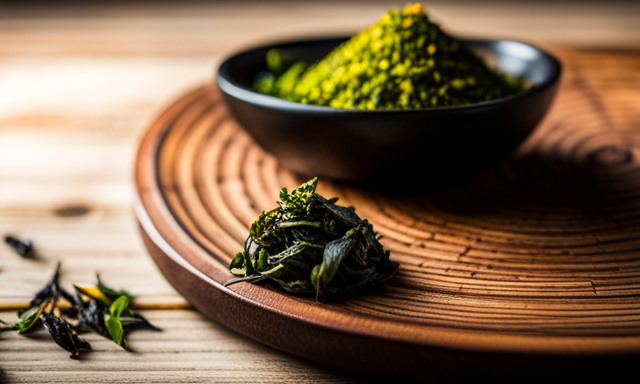
Did you know that oolong tea is the most popular type of tea in China, making up 70% of their tea consumption? This statistic underscores the widespread appeal and cultural importance of this distinctive variety of tea.
In this article, I will guide you through the world of oolong tea and help you discover which type is the best for your taste buds.
We will delve into the origins of oolong tea and explore the different types available, each with its own distinctive flavor profile. Not only does oolong tea offer a delightful sensory experience, but it also boasts numerous health benefits. From boosting metabolism to improving heart health, this tea is a true powerhouse.
Choosing the right oolong tea can be a daunting task, but fear not! I will provide you with expert tips on finding high-quality oolong tea and even suggest some food pairings to enhance your tea-drinking experience.
So sit back, relax, and let’s embark on a journey to discover the best oolong tea for you.
Key Takeaways
- Oolong tea comes in many varieties, with flavor and aroma influenced by oxidation levels and roasting techniques.
- Each type of oolong tea has its own unique flavor profile, ranging from floral and fruity to roasted flavors.
- Oolong tea offers numerous health benefits, such as promoting weight loss, boosting metabolism, and enhancing mental alertness.
- When choosing oolong tea, consider the flavor profile that best suits your preferences and experiment to find your personal favorite.
The Origins of Oolong Tea
Let’s dive into the fascinating origins of oolong tea and discover how this delightful beverage came to be!
The story of oolong tea begins with the art of tea cultivation, which dates back centuries in the lush mountains of China. Skilled tea farmers carefully tend to the tea plants, selecting the finest leaves for oolong tea production.
Once harvested, the leaves undergo a meticulous oolong tea processing, where they are withered, rolled, and oxidized to create the perfect balance of flavors. This process is a true art form, requiring precision and expertise to achieve the desired taste and aroma.
Understanding the different types of oolong tea is crucial to appreciating its nuances and complexities. So, let’s delve into the next section where we explore the various varieties of this exquisite tea.
Understanding the Different Types of Oolong Tea
Exploring the vast array of oolong tea varieties is like embarking on a journey through a fragrant and flavorful landscape. Oolong tea comes in many different types, each with its own unique characteristics and taste profiles.
The differences in flavor and aroma are a result of the various oolong tea processing methods used. Oxidation levels and roasting techniques play a significant role in shaping the final product.
From lightly oxidized oolongs with floral and fruity notes to heavily roasted ones with rich, toasty flavors, there is an oolong tea to suit every palate.
Popular oolong tea growing regions such as Taiwan, China, and Fujian are known for producing exceptional oolong teas. These regions have ideal climates and fertile soil, which contribute to the high quality and distinct flavor profiles of their teas.
As we delve deeper into exploring the flavor profiles of oolong tea, we will discover the intricate nuances that make each type of oolong tea truly unique.
Exploring the Flavor Profiles of Oolong Tea
Get ready to embark on a sensory adventure as you discover the diverse flavor profiles that oolong tea has to offer.
Exploring unique oolong tea flavors is like entering a world of complexity and sophistication. The art of tea tasting oolong involves carefully sipping and savoring each brew, allowing the flavors to unfold on your palate.
From the floral notes of a delicate green oolong to the rich, roasted taste of a dark oolong, there is a flavor profile to suit every taste preference. Some oolong teas have a smooth, creamy texture, while others have a refreshing, fruity tang. The range of flavors is truly remarkable.
As we delve into the health benefits of oolong tea, you’ll discover that its incredible taste is just the beginning.
Health Benefits of Oolong Tea
Indulging in a cup of oolong tea can provide a myriad of health benefits, making it a wise choice for those seeking to enhance their well-being. Oolong tea is known for its numerous health benefits, including promoting weight loss. It contains antioxidants that can help boost metabolism and increase fat oxidation, making it an excellent addition to a weight loss regimen. Additionally, oolong tea is rich in polyphenols, which have been shown to have anti-inflammatory and anti-cancer properties.
To further illustrate the health benefits of oolong tea, let’s take a look at the table below:
| Health Benefits of Oolong Tea | ||
|---|---|---|
| Boosts metabolism | Supports weight loss | Reduces inflammation |
| Enhances mental alertness | Promotes heart health | Strengthens immune system |
| Aids digestion | Improves skin health | Regulates blood sugar levels |
| Protects against tooth decay | Promotes healthy bones | Reduces the risk of chronic diseases |
Now that we are aware of the health benefits of oolong tea, let’s move on to choosing the right oolong tea for your taste.
Choosing the Right Oolong Tea for Your Taste
Discover your perfect palate-pleasing oolong tea by selecting a sensational flavor that satisfies your taste buds. When choosing the right oolong tea for beginners, it is essential to explore the different flavor profiles of this exquisite tea.
-
Floral: Delicate and fragrant, floral oolong teas offer a captivating blend of sweet and aromatic notes, such as jasmine or orchid.
-
Fruity: Bursting with fruity flavors like peach, apple, or citrus, these oolong teas provide a refreshing and tangy experience.
-
Roasted: With a rich and toasty flavor, roasted oolong teas offer a warm and comforting taste reminiscent of nuts or caramel.
Each flavor profile brings a unique character to the tea, allowing you to experiment and find your personal favorite.
Now that you have chosen your ideal oolong tea, let’s delve into brewing tips for the perfect cup of oolong tea.
Brewing Tips for the Perfect Cup of Oolong Tea
Mastering the art of brewing oolong tea will transport you to a serene oasis, where the gentle aroma and rich flavors intertwine to create a sublime experience for your senses. To achieve the perfect cup of oolong tea, it is crucial to pay attention to brewing techniques and temperature control.
Oolong tea leaves are delicate and require careful handling. Begin by using freshly filtered water and bring it to a temperature of around 195°F (90°C). Steep the tea leaves for about 3-5 minutes, allowing them to unfurl and release their flavors gradually. Adjust the brewing time to suit your preference for a stronger or milder taste.
Once brewed, the resulting cup of oolong tea should have a beautiful golden hue and a complex yet balanced flavor profile.
Now, let’s explore where to buy high-quality oolong tea and discover a world of exquisite options.
Where to Buy High-Quality Oolong Tea
Immerse yourself in a world of exquisite options and elevate your tea experience by knowing where to find the highest quality oolong tea.
When it comes to buying oolong tea, there are two main options: purchasing online or visiting tea shops. Buying online offers convenience and a wide selection, allowing you to explore different varieties and origins from the comfort of your home. Reputable online tea retailers provide detailed descriptions and customer reviews to help guide your decision.
On the other hand, visiting tea shops provides a unique sensory experience. You can smell and taste the teas, interact with knowledgeable staff, and gain insights into the brewing process.
Whether you choose to buy online or visit tea shops, both options offer a chance to discover the perfect oolong tea that suits your taste preferences.
Transitioning into the subsequent section, let’s explore the fascinating connection between oolong tea and traditional tea ceremonies.
Oolong Tea and Traditional Tea Ceremonies
When it comes to the world of tea, oolong tea holds a special place in my heart. Not only is it a delicious beverage, but it also has rich cultural significance. Oolong tea has a long history in ancient China, where it was treasured for its unique flavor and health benefits. In fact, it was often served during important ceremonies and used as a symbol of hospitality and respect.
In addition to its significance in China, oolong tea also plays a role in Japanese tea ceremonies. The brewing and serving of oolong tea is a meticulous process that requires precision and grace. The tea itself is seen as a representation of purity and harmony.
Now, let me transition to the next section, where we will explore the delightful world of oolong tea pairings with food.
Oolong Tea Pairings with Food
Let’s take a look at some surprising flavor combinations that will elevate your dining experience when enjoying oolong tea with food.
Did you know that a study found that pairing oolong tea with dark chocolate enhances the tea’s natural floral and fruity notes? This unexpected combination creates a harmonious balance, where the bitterness of the chocolate complements the rich and complex flavors of the oolong tea.
Additionally, oolong tea has been known for its potential weight loss benefits, as it contains polyphenols that can aid in boosting metabolism and reducing fat absorption.
Furthermore, oolong tea is also renowned for its ability to promote relaxation and reduce stress levels. The soothing aroma and gentle flavors of oolong tea make it a perfect accompaniment to a quiet evening of unwinding.
Now, let’s delve into oolong tea and its cultural significance.
Oolong Tea and its Cultural Significance
Oolong tea holds a rich cultural significance, deeply rooted in traditions and rituals that have been passed down through generations. This exquisite tea has become an integral part of traditional ceremonies and is highly valued for its unique flavor and aroma. Here are four aspects of oolong tea’s cultural significance:
-
Symbolism: Oolong tea is often associated with harmony and balance, representing the interconnectedness of nature and humanity. It is a symbol of tranquility and sophistication.
-
Tea ceremonies: Oolong tea is frequently used in traditional tea ceremonies, where every step, from the preparation to the serving, is meticulously performed. These ceremonies are a way to honor the tea, bringing people together and fostering a sense of community.
-
Appreciation of nature: Oolong tea cultivation emphasizes the connection with nature, as the leaves are grown in specific regions known for their terroir. This appreciation for the natural environment is reflected in the tea’s flavors and quality.
-
Cultural heritage: Oolong tea’s long-standing presence in Chinese and Taiwanese cultures has made it an integral part of their identity. It is a testament to the rich history and traditions that have shaped these societies.
Frequently Asked Questions
How much caffeine is typically found in oolong tea?
You won’t believe the energy boost you’ll get from a cup of oolong tea! With varying caffeine content, different oolong tea varieties offer a range of health benefits when consumed regularly.
Can oolong tea be consumed while pregnant or breastfeeding?
Oolong tea is generally safe to consume during pregnancy and breastfeeding. However, it is recommended to consult with a healthcare professional for personalized advice. There is limited research on its effect on breast milk production.
What is the recommended daily intake of oolong tea for maximum health benefits?
To achieve maximum health benefits from oolong tea, the recommended daily intake depends on various factors such as individual tolerance and overall health. It is best to consult with a healthcare professional for personalized guidance.
Are there any potential side effects or risks associated with drinking oolong tea?
Drinking oolong tea can offer potential health benefits, but it’s important to be aware of potential side effects. It is recommended to follow proper brewing methods to maximize its benefits and minimize risks.
Can oolong tea help with weight loss or managing blood sugar levels?
Oolong tea has been shown to aid in weight loss by boosting metabolism and fat oxidation. It also has the potential to help manage blood sugar levels due to its ability to regulate insulin secretion.
Conclusion
In conclusion, oolong tea is a versatile and flavorful beverage that offers a wide range of options for tea enthusiasts. It has a rich history, diverse flavor profiles, and numerous health benefits. Oolong tea is a perfect choice for those looking to explore the world of tea. There is an oolong tea to suit every taste, whether you prefer a light and floral Tie Guan Yin or a bold and robust Da Hong Pao.
For example, a recent study conducted by researchers at a prestigious university found that regular consumption of oolong tea can help improve digestion and promote weight loss. Oolong tea also has cultural significance and can be paired with various foods.
With its exquisite flavors and benefits, oolong tea truly stands out among the vast array of tea options available. So why not indulge in a cup of oolong tea and experience its delights for yourself?
-

 Tea Brewing and Preparation1 month ago
Tea Brewing and Preparation1 month agoThe Science Behind Decaffeinated Tea: Methods And Benefits
-
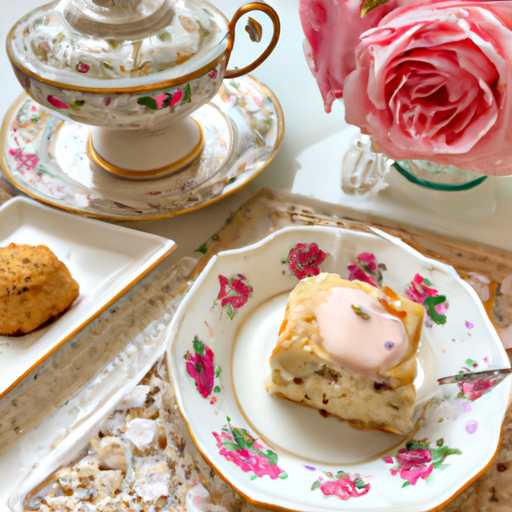
 Tea Brewing and Preparation1 month ago
Tea Brewing and Preparation1 month agoAfternoon Tea Etiquette: 12 Dos And Don’Ts
-
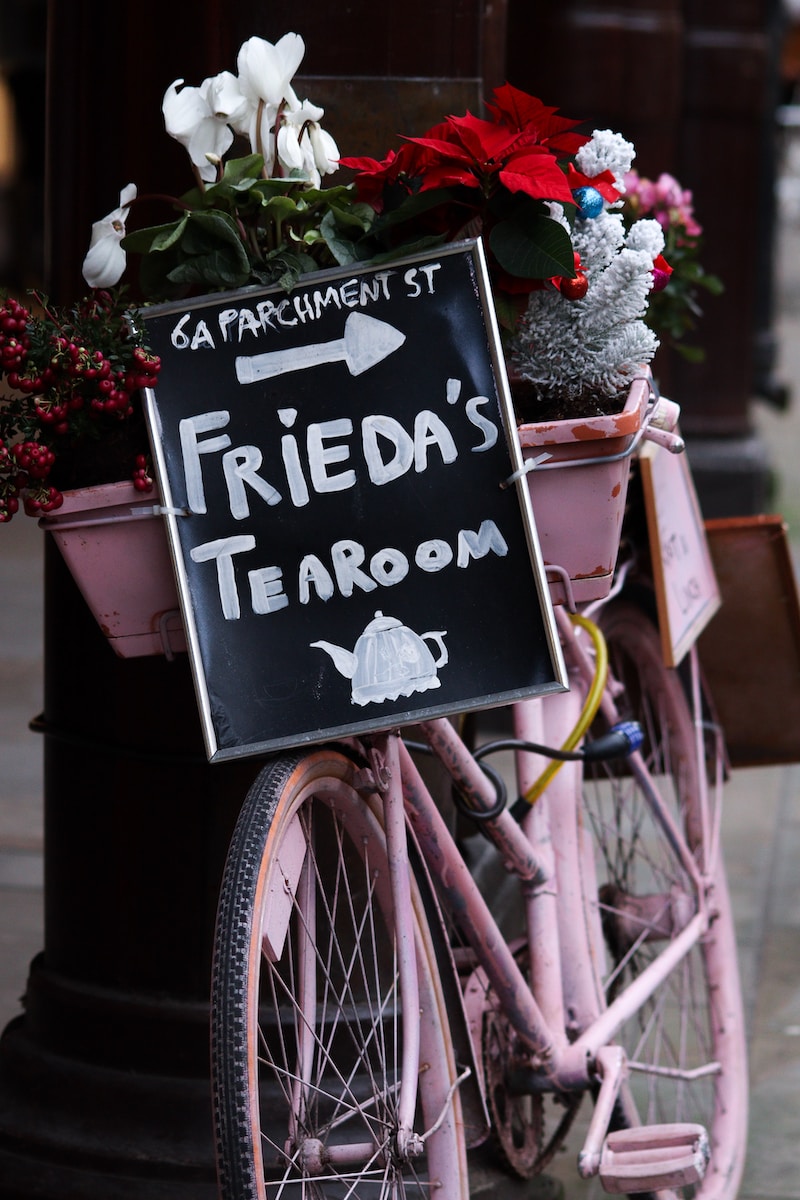
 Tea Industry Trends and Innovations4 weeks ago
Tea Industry Trends and Innovations4 weeks agoCritical Thinking Is Important For Evaluating Which Parts Of Advertisement
-
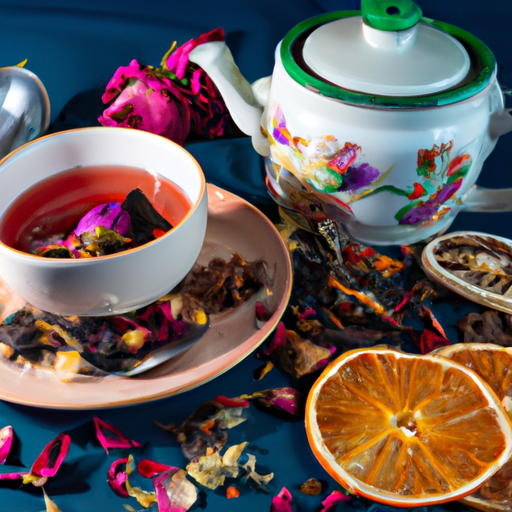
 Tea Brewing and Preparation1 month ago
Tea Brewing and Preparation1 month agoExploring English Breakfast Tea: Flavors, Blends, And Recommendations
-

 Tea Brewing and Preparation1 month ago
Tea Brewing and Preparation1 month agoStarting A Profitable Tea Business: Tips, Resources, And Success Stories
-

 Tea Brewing and Preparation1 month ago
Tea Brewing and Preparation1 month agoHow To Cold Steep Tea (And Why!)
-
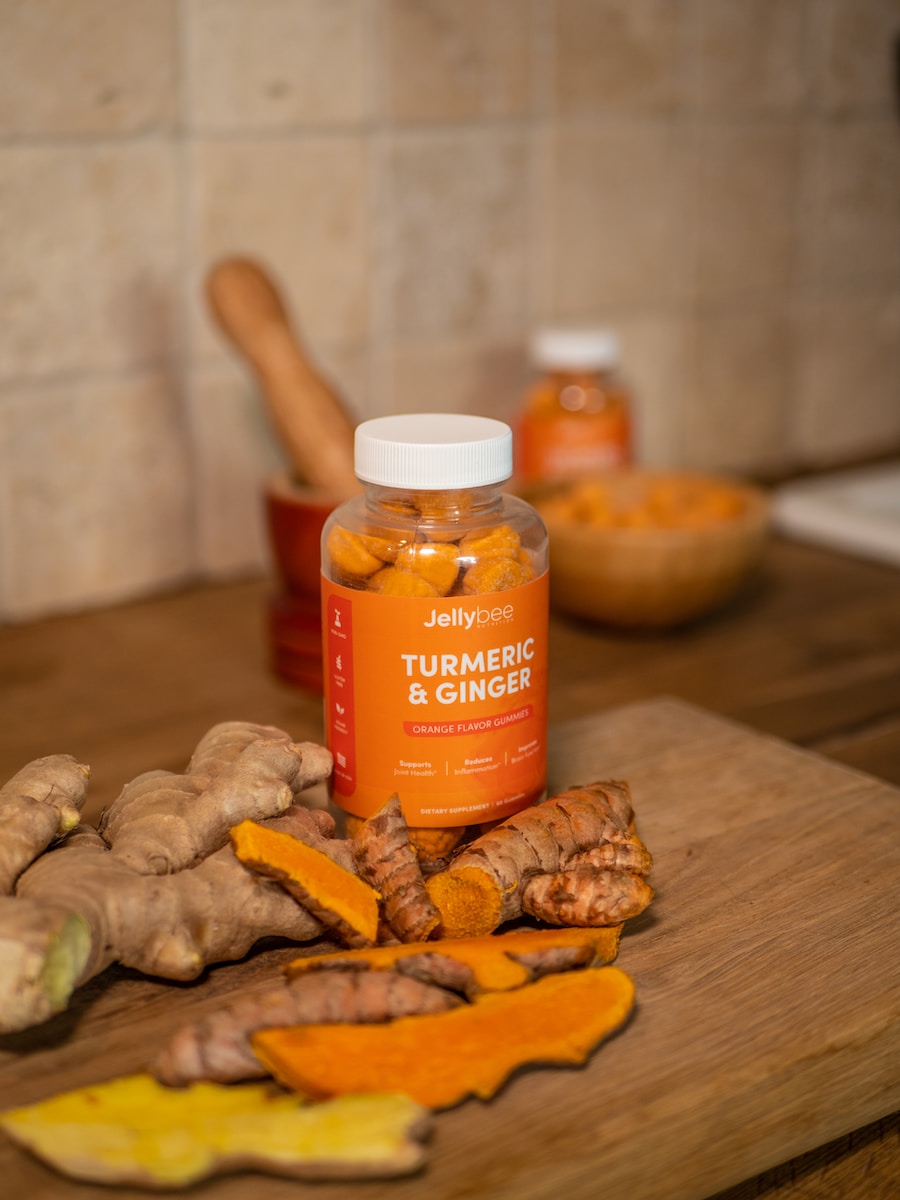
 Turmeric Tea3 days ago
Turmeric Tea3 days agoDoes Turmeric Make Your Poop Yellow
-
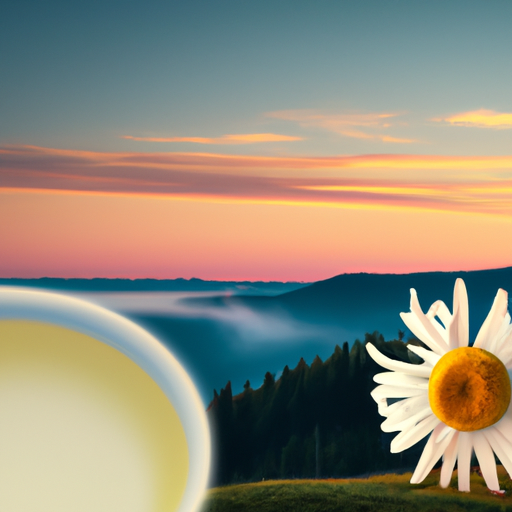
 Herbal Tea3 weeks ago
Herbal Tea3 weeks agoWhat Happened To Cup Of Life Organic Herbal Tea




